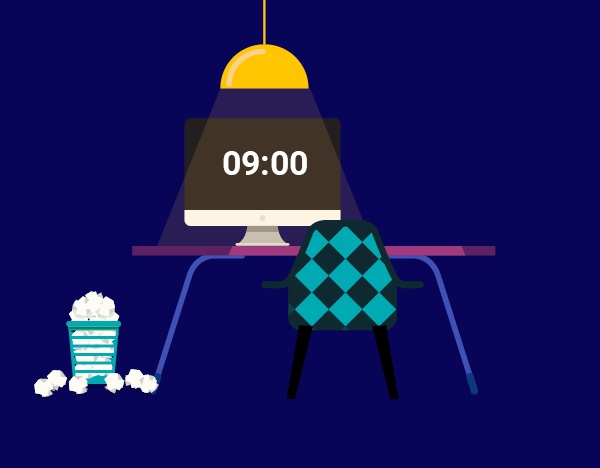Working from home has plenty of upsides, but it can take a bit of getting used to. It often means more flexibility and freedom – things that can leave some of us feeling a little lost at times.
Structuring your day can really help to prioritise your health, happiness and productivity. Here’s what you can do to ensure you get the most out of your time while you’re working remotely.
1. Have a dedicated space
You don’t need a home office in order to work from home, but it’s a good idea to have a space that’s specifically set aside for work – it might be a spare room or even your kitchen table. Having a dedicated space means you can shut the door at the end of the day or clear away your things from the kitchen bench. Doing this helps create boundaries and a physical sense that your work is separate from your home life.
2. Stick to your usual routine
If you’re normally at your desk by 8.30am, aim to maintain this routine at home. While you may get a sleep in because you don’t have to commute, it’s important your work day takes its usual shape. This includes doing everything you usually do, such as exercising, showering and getting dressed. You also want to be at a desk, rather than working from bed or your couch, when your working day begins.
3. Managing your time when you’re at home
There are lots of potential distractions at home – TV shows begging to be watched, washing that needs to be done, dogs to walk – but there are simple ways to manage the constant call of distraction. Write a daily ‘to do’ list in the morning and then identify your top three tasks. Block out time in your day to do these tasks.
If you find yourself getting distracted, set a timer for 20 to 30 minutes and work solidly for that time. Then take a 5 or 10-minute break and set the timer again.
4. Stay connected with your colleagues
Talk with your peers and boss about how you’re going to keep connected. Will you have daily phone calls to check in? Will you be available throughout the day on email or will you use online time management platforms to communicate? Working remotely can be isolating, so take the time to connect regularly with those who are usually around you. This work from home technology checklist could help.
If you’re operating solo, staying in touch with your professional contacts or clients could be important not only for your tasks or projects – it can help you enjoy the social side of work, too.
5. Manage your focus
It’s so easy to go online to check the news and find yourself scrolling through social media half an hour later. This can have a big impact on your productivity. If you want to stay up to date, schedule in a couple of ‘news checks’ during the day. Set a 10-minute timer and once the timer goes off, get back to work.
While working from home can be a challenge at first, it’s also a great opportunity. Many people find they’re more productive or focused when they work remotely. And with the right tools to work from home, you’ll find you can easily stay connected.
What a structured work-from-home day could look like
Here's an example of how you could plan out your day when working remotely:
- 6.30am-9:00am: Breakfast, family time, exercise and get ready for the day.
- 9:00am-9.30am: Check in with colleagues, catch up on emails and plan the day’s tasks.
- 9:30am-12:00pm: Focus time for important tasks (include 5 to 10-minute breaks as needed).
- 12:00pm-1:00pm: Eat lunch, go for a walk or get a break from your workspace.
- 1:00pm-5.30pm: Come back to your work and review it, tackle more tasks, take care of any planning or check-ins with colleagues (include breaks as needed).
- 5:30pm: Wrap up tasks, make tomorrow's to-do list. End your working day by packing away your laptop or other equipment to help you switch into ‘off’ mode.
For more tips, see 5 ways to make working from home better



